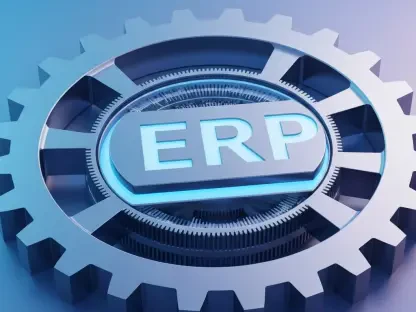The demand for advanced computing capabilities is soaring, driven by artificial intelligence (AI) and large language models (LLMs). As this trend accelerates, it faces a formidable obstacle: energy efficiency. High-performance computing (HPC) systems, known for their extensive energy consumption, are in the spotlight, necessitating innovative solutions that balance computational prowess with environmental concerns.
The Critical Role of Energy Efficiency
In today’s world, where technological advancements occur at a breathtaking pace, HPC systems are integral to research, data analysis, and more. However, rising energy costs and increasingly stringent regulations spotlight energy efficiency as a top priority. Understanding the dynamics that impact HPC energy management is essential for organizations striving to remain competitive while minimizing their environmental footprint.
Shaping HPC’s Future with Cloud Innovations
The Competitive Edge of AWS and NVIDIA
Cloud service providers like Amazon Web Services (AWS) and NVIDIA are pivotal in redefining energy-efficient HPC operations. By prioritizing cutting-edge, energy-efficient computing resources, they are paving the way for a sustainable future. AWS’s strategic use of NVIDIA GPUs exemplifies how collaboration and technological innovation can yield significant energy savings and improve compliance with environmental policies.
A Comparative Perspective: Cloud and Traditional Models
Moving traditional on-premises HPC workloads to the cloud offers both opportunities and hurdles. While cloud adoption guarantees enhanced operational flexibility and energy savings, some organizations express reservations about security and reliability. These concerns present obstacles, yet the prevailing trend indicates a growing confidence in cloud capabilities, motivated by technological progress and strategic necessity.
Regional Variations in HPC Strategies
Globally, HPC energy strategies vary due to local energy policies and infrastructure constraints. Innovations like virtual machines and specialized algorithms provide unique solutions tailored to regional demands. Effective market-specific strategies include harnessing localized energy resources and adapting to prevailing computational needs, dismissing the notion of uniform solutions across different terrains.
Envisioning Future Trends in HPC Energy Management
Technological advances continue to reshape HPC energy strategies, with emerging trends promising extensive transformation. Enhanced machine learning models, new sustainability regulations, and cloud infrastructure refinements are poised to drive further change. The ongoing evolution toward increased integration between HPC systems and energy-efficient cloud architectures signals substantial benefits for both sectors.
Strategic Recommendations for HPC Optimization
For organizations committed to optimizing HPC energy efficiency, adopting best practices such as virtualization and dynamic workload scheduling is crucial. Implementing active energy monitoring and analytics further enhances operational success. Customized strategies that align with organizational objectives can propel both innovation and sustainability within HPC landscapes.
Reflecting on HPC’s Energy Evolution
The journey toward energy efficiency in high-performance computing reveals a narrative of adaptation and progress. Cloud solutions have emerged as catalysts for sustainable change, offering pathways to overcome energy challenges. As organizations navigate this rapidly evolving landscape, embracing cloud technologies offers potential for long-term sustainability and compliance, supporting economic and environmental objectives.









